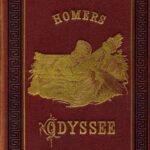On October the 23rd my son went to a competition in his school. It was very competitive due to the amount of kids found in the school. There were an approcimate of about 40 students, who were all ready to win. The competition was about who’s egg drop project would survive off a two story school building with the lightest and most efficient project. Everyone was determined to win. Everyone’s except two projects did not survive the crash. The designs of the 3 top projects where:
1.) In first place, the design used by a female student was a styro-foam rectangular box with a parachute. The rectangular box had a space in which the egg went and the inside was also filled with some bubble wrap.
2.) In second place was my son. His design was two cups layered by bubble wrap and cotton balls and a parachute. It was the most ellaborate of all the projects because of it’s somewhat complex design( for more info about his experiment keep reading ).
3.) In third place was a design similar to the first place winner except that the rectangular styro-foam box was inside a hard plastic covering, used by electronic stores which is used to package cables and jump drives. Then that the plastic box like object was attached to a parachute.
I will provide the experiment procedures that my son used for his project. I encourage that if you are using this for a school project, please don’t. Instead you can use my son’s design and improve it to make the descent of the parachute more effective to ensure your landing is safe, but remember to always have fun no matter what you are doing with the egg drop aparatus:
Egg drop
Supplies:
· A pack of styro-foam cups
· An estimated amount of 2 toothpicks
· Plastic Grocery bag
· Paper
· Pen
· Half-dozen of eggs
· A computer
· We need a place to throw the egg from
· Pair of Scissors
· Cotton Balls
· Super Glue
· Bubble wrap
· Tape
Procedures:
1. Place all the materials in front of you.
2. Name a cup, cup A and another cup, cup B.
3. Important Note! (Cup A is inside Cup B!!!)
4. Tape a layer of bubble wrap around a cup A.
5. Place cup A into cup B and wrap with another layer of bubble wrap.
6. Any bubble wrap that sticks out should be folded neatly into a layer beneath cup B.
7. Using the super glue, make a bottom layer of cotton balls, not to thick or too many, in cup A.
8. Now cut an accurate measure of bubble wrap and stick it bottom of cup A.
9. Now make a cylinder of cotton balls only using the inside wall of Cup A , using the super glue.
10. Now cut a 1 foot by 1 foot piece of bubble wrap and stick it around the outside of Cup B. Use the leftover bubble wrap to make a landing pad under Cup B, use tape if needed.
11. Now find a large grocery bag, the ones made out of plastic.
12. Cut each of the handles in half, then you will have 4 strips that serve as handles now.
13. Tape each of the handles against a side of the cup; divide each distance between each handle equally.
14. For assurance, first split two toothpicks in half.
15. Then use each half of a toothpick and stab it through the handles with tape.
16. The grocery bag is now serving as your parachute.
17. Place the egg inside carefully and launch away!
18. After retrieving your apparatus take the stakes out (toothpicks) then retrieve your intact egg
Apparatus Design Features
We decided to construct our apparatus in this manner because we thought that the double layer of bubble wrap plus the cotton ball layer would cushion and absorb the most amount of force (measure by Kg x m/sec.). We also made our design extremely light so that the force would be less. But we discovered that this format was not completely effective with only one layer of bubble wrap. So we added another cup as a filter for the oncoming force, and further reinforced it using another layer of bubble wrap. But still we were not satisfied. We used a massive amount of bubble wrap on the second layer, and we used what did not cover the apparatus to create a sort of make-shift landing pad, which would cushion the fall. For further measure, we added a bag (grocery bag to be specific) to serve as a method to decrease the speed of the descent of the apparatus. This, all together provided a relatively light system that safely carried our egg down at a slow speed.


